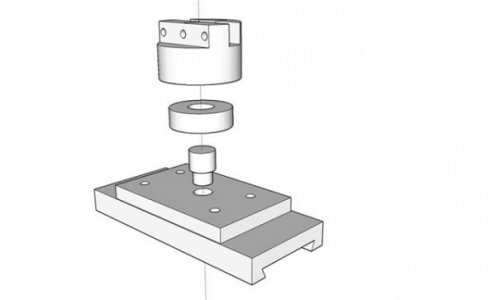Probably over-thinking this & worried about nothing, but I need to permanently bond a (steel) sealed bearing inside a brass cylinder & was wondering if Loctite 620 bearing mount/retaining compound would be sufficient? I’ve used 620 a lot in the past for aluminum, steel, or a combination of the two with great success, but have yet to try it with brass (heard that brass can be finicky stuff to bond to).
In case anyone is wondering what the application is for, I’m making a radius turning attachment for my little 7x12 lathe:

O/D of bearing will be bonded to tool holder. Bearing pocket will be bored .050” deeper than bearing thickness.
When O/D has fully cured to tool holder, I/D of bearing will be bonded to stub sticking up from .375” thick x 2.5” wide base plate.
Once completed, bottom of tool holder will sit snugly against base plate, yet still be able to rotate easily. Basically making for a one-piece, somewhat sealed unit.
Note - only reason I went with brass round bar for the tool holder is because that is all I currently have on hand that is 2” diameter or larger. If brass won’t cut it (no pun intended) I could always purchase a length of 1144 if need be.
Any advice and/or suggestions are greatly appreciated!
In case anyone is wondering what the application is for, I’m making a radius turning attachment for my little 7x12 lathe:

O/D of bearing will be bonded to tool holder. Bearing pocket will be bored .050” deeper than bearing thickness.
When O/D has fully cured to tool holder, I/D of bearing will be bonded to stub sticking up from .375” thick x 2.5” wide base plate.
Once completed, bottom of tool holder will sit snugly against base plate, yet still be able to rotate easily. Basically making for a one-piece, somewhat sealed unit.
Note - only reason I went with brass round bar for the tool holder is because that is all I currently have on hand that is 2” diameter or larger. If brass won’t cut it (no pun intended) I could always purchase a length of 1144 if need be.
Any advice and/or suggestions are greatly appreciated!

